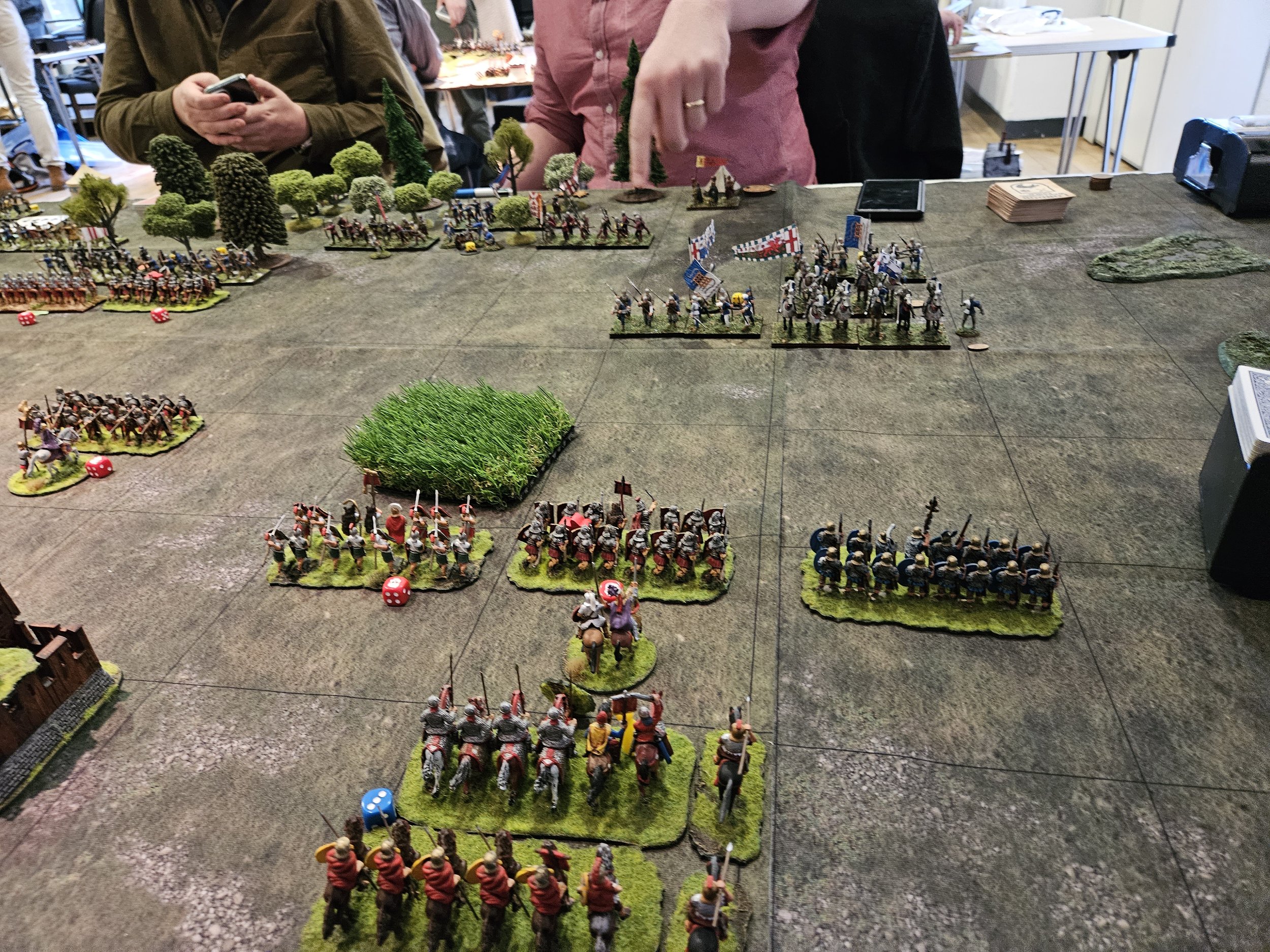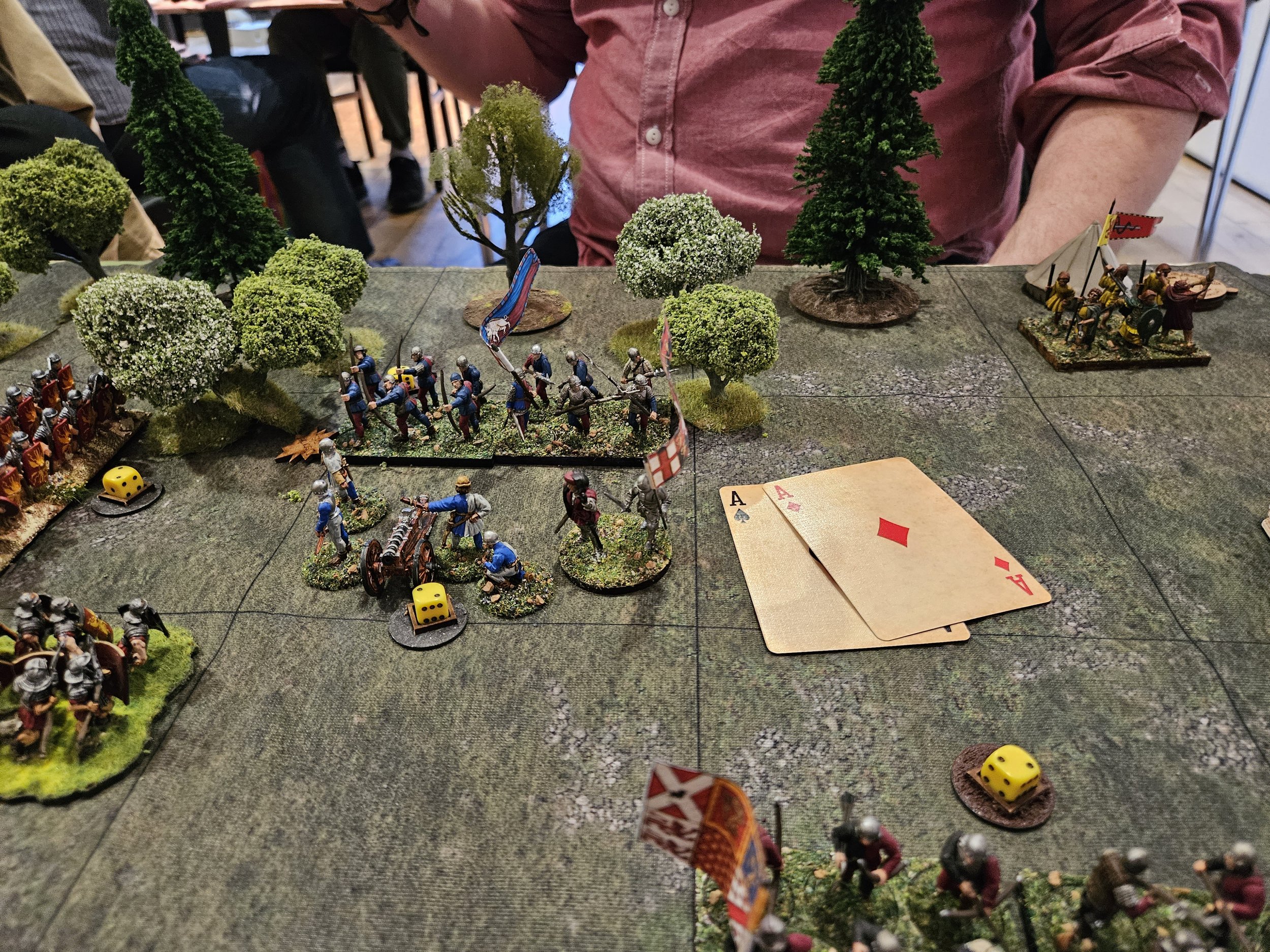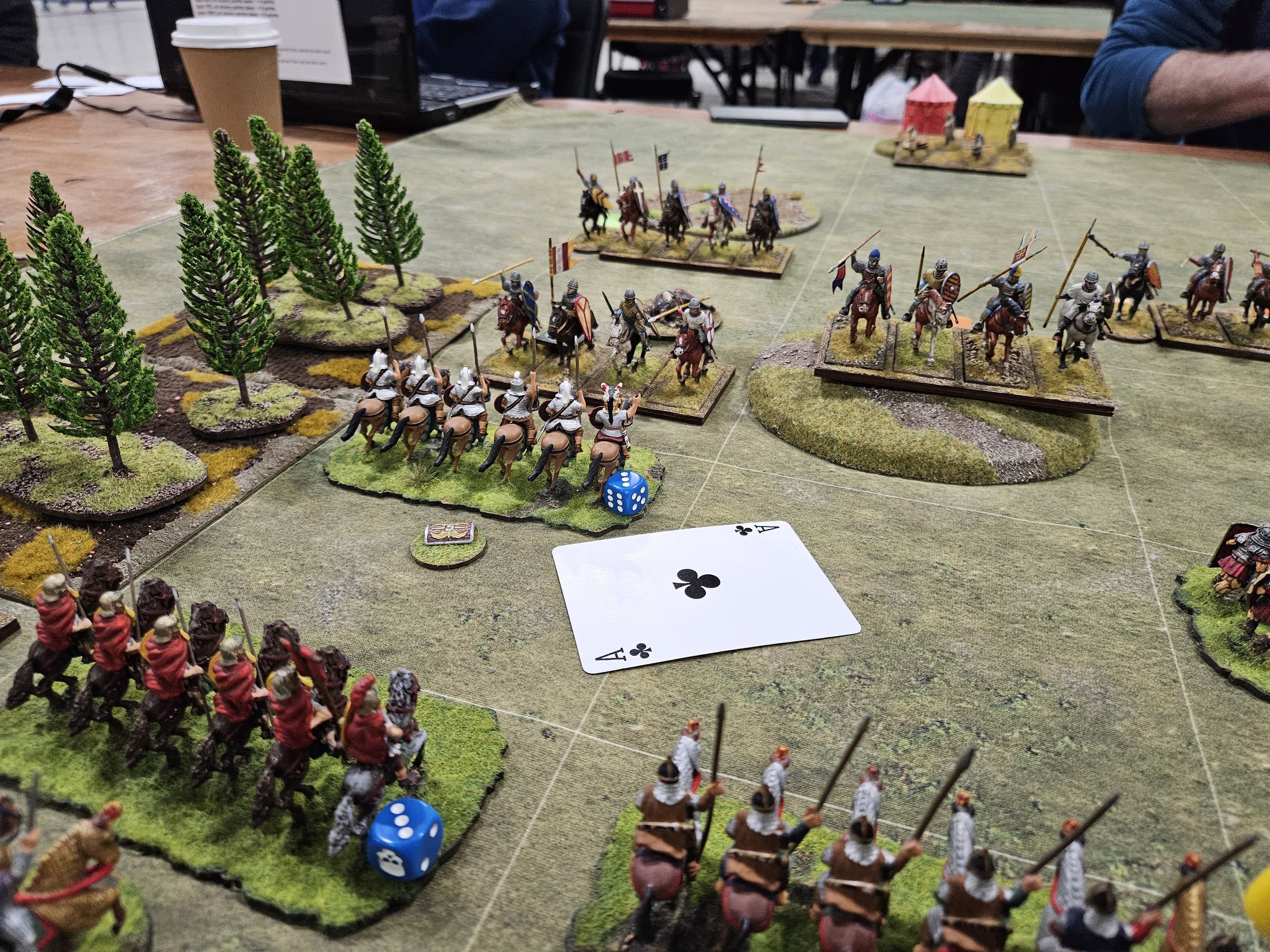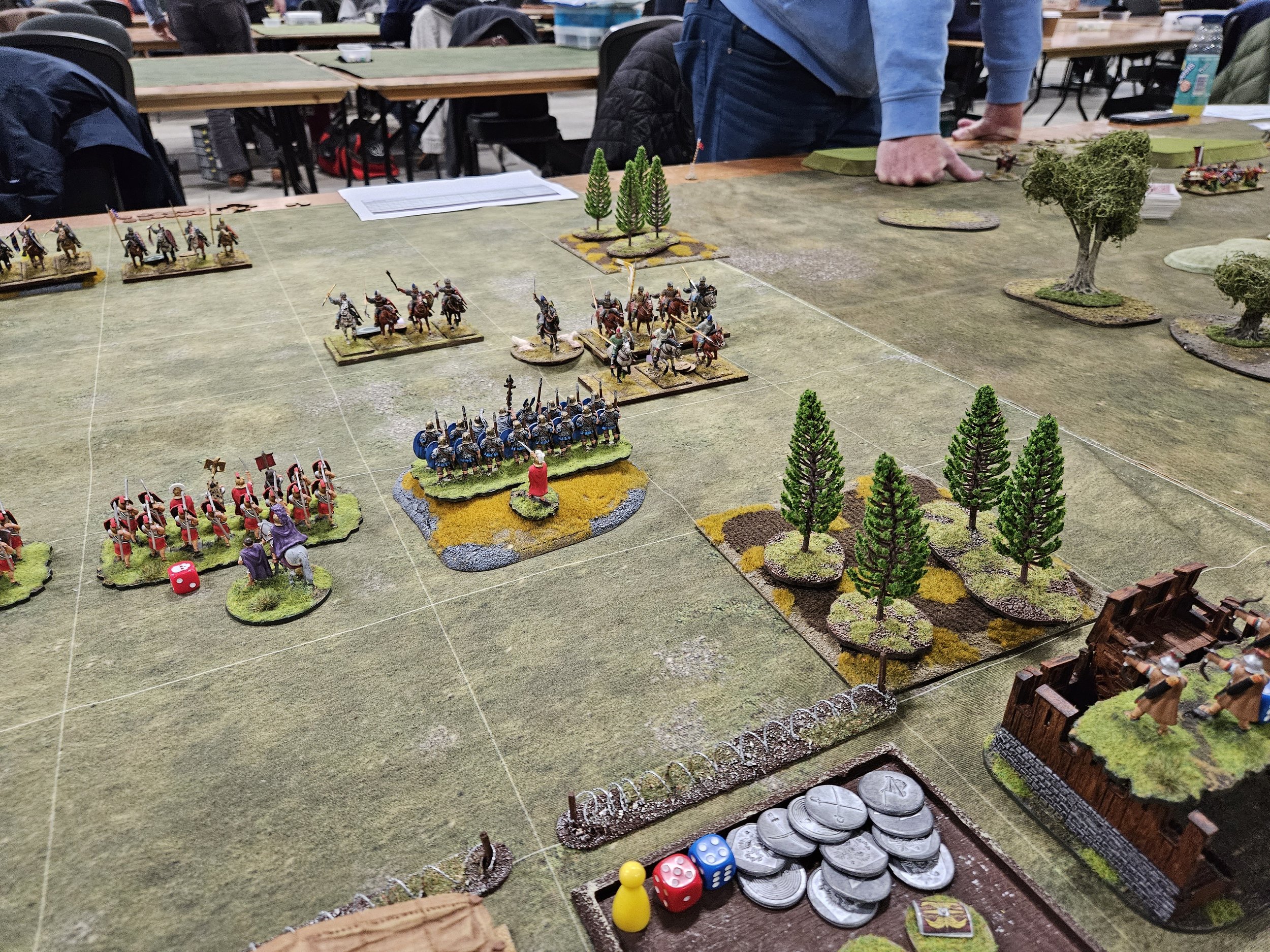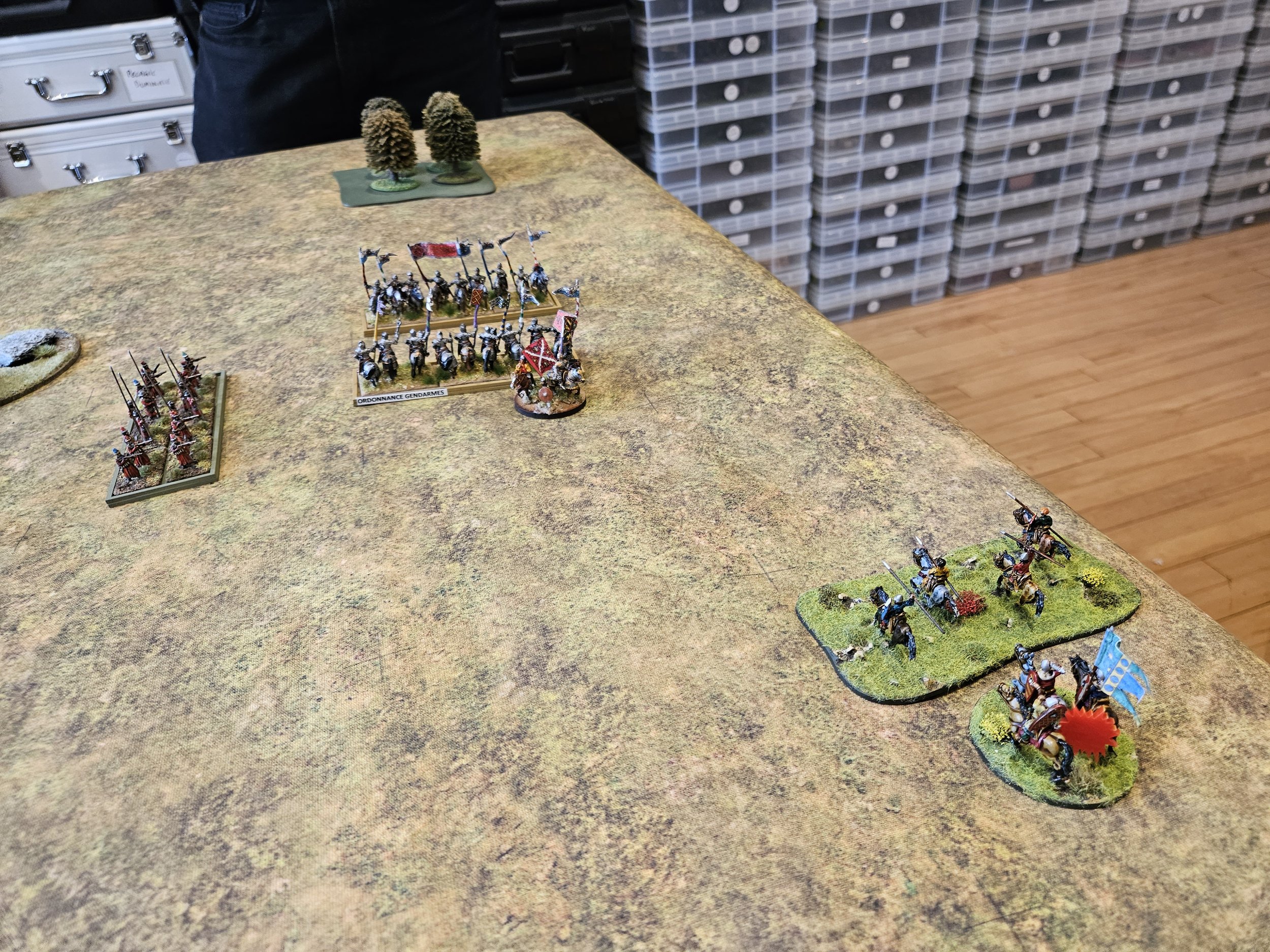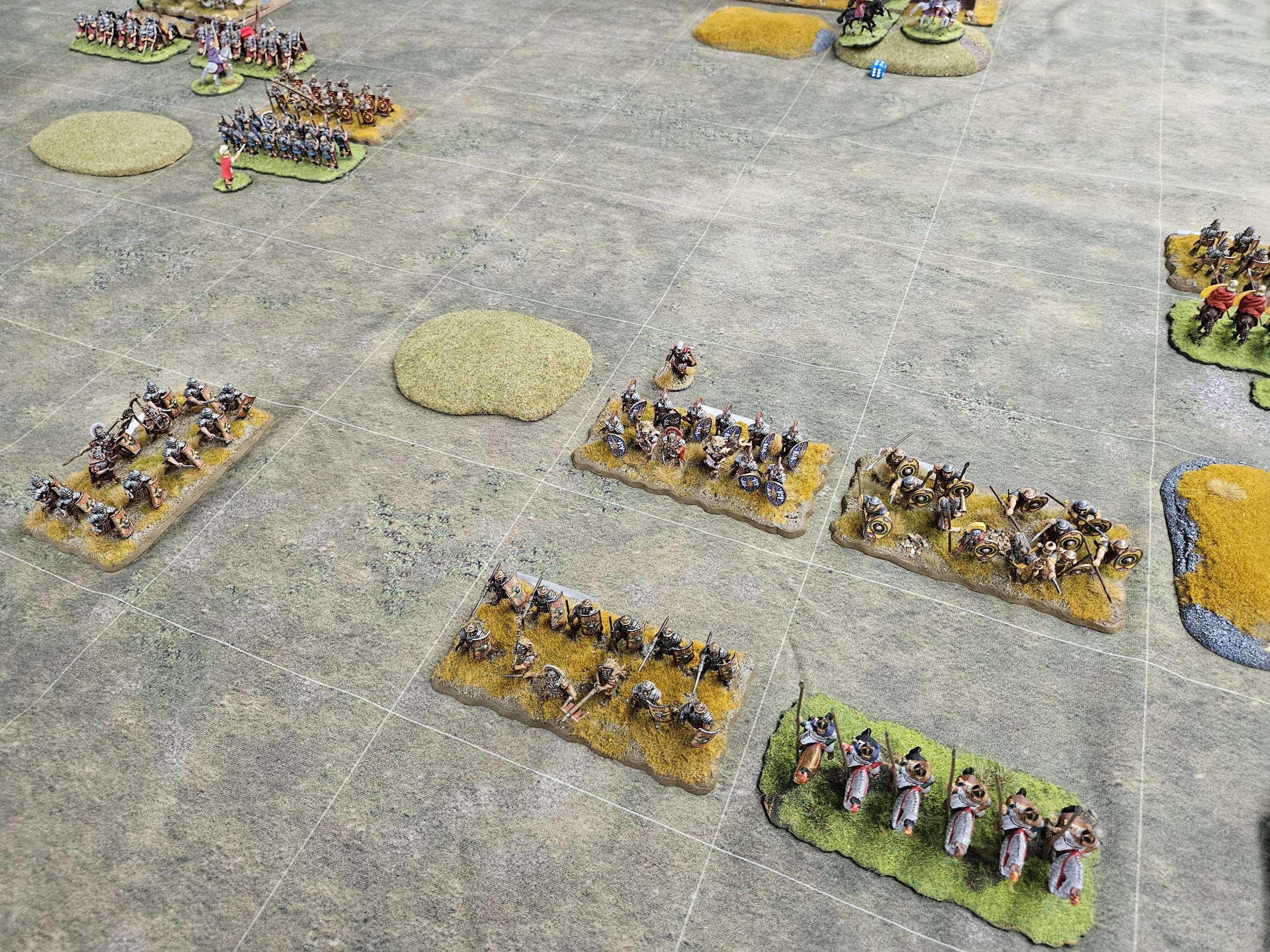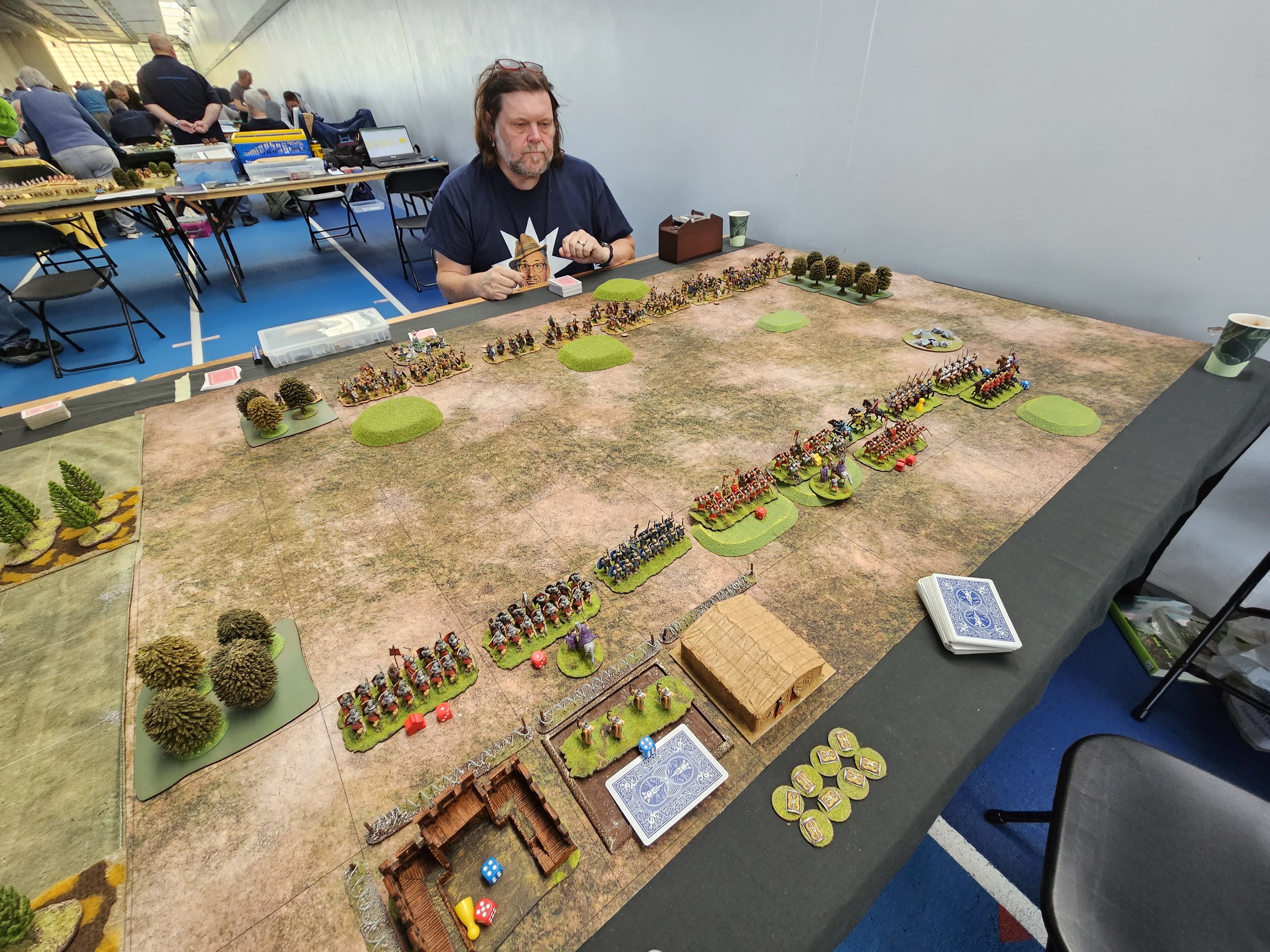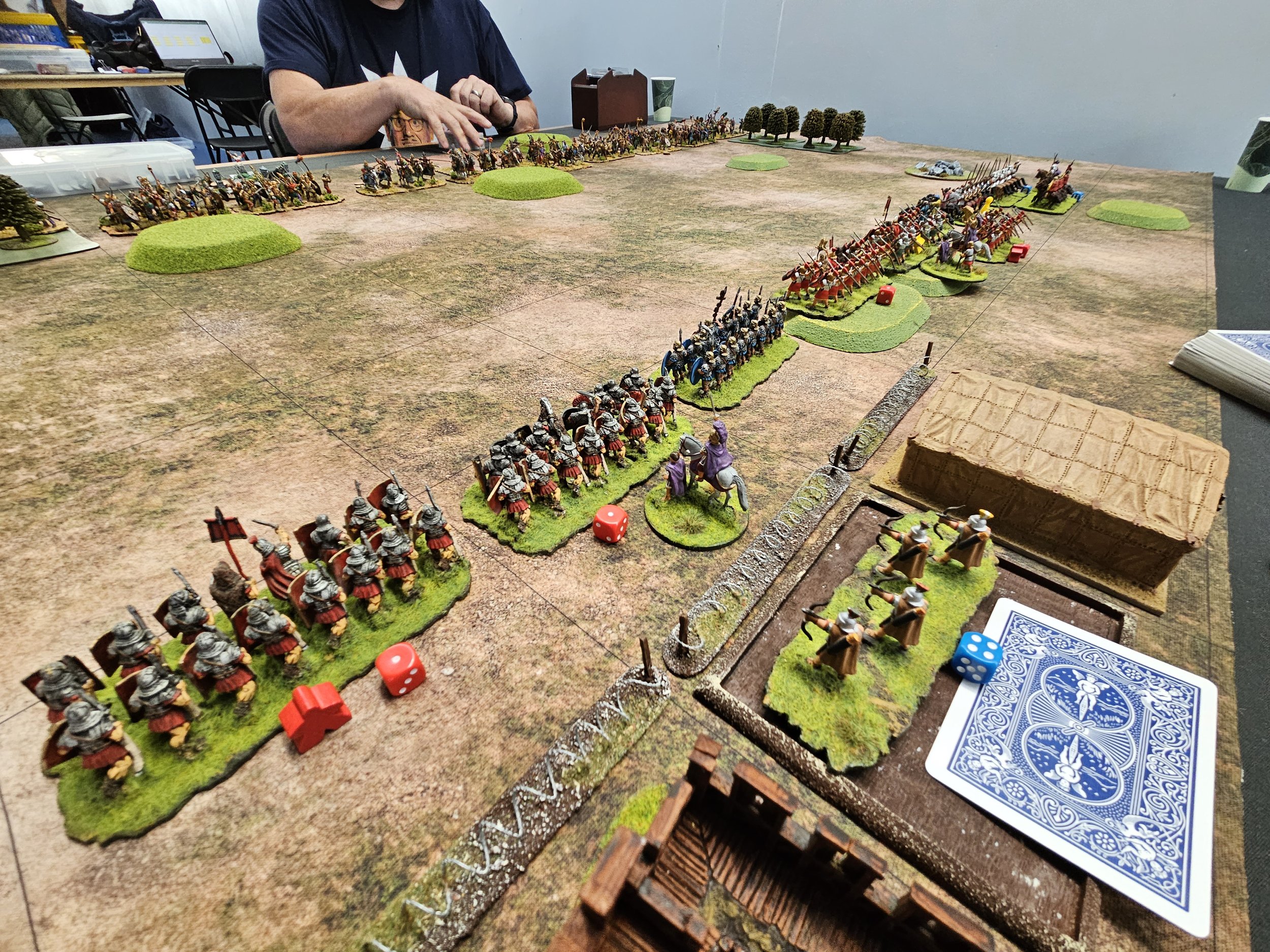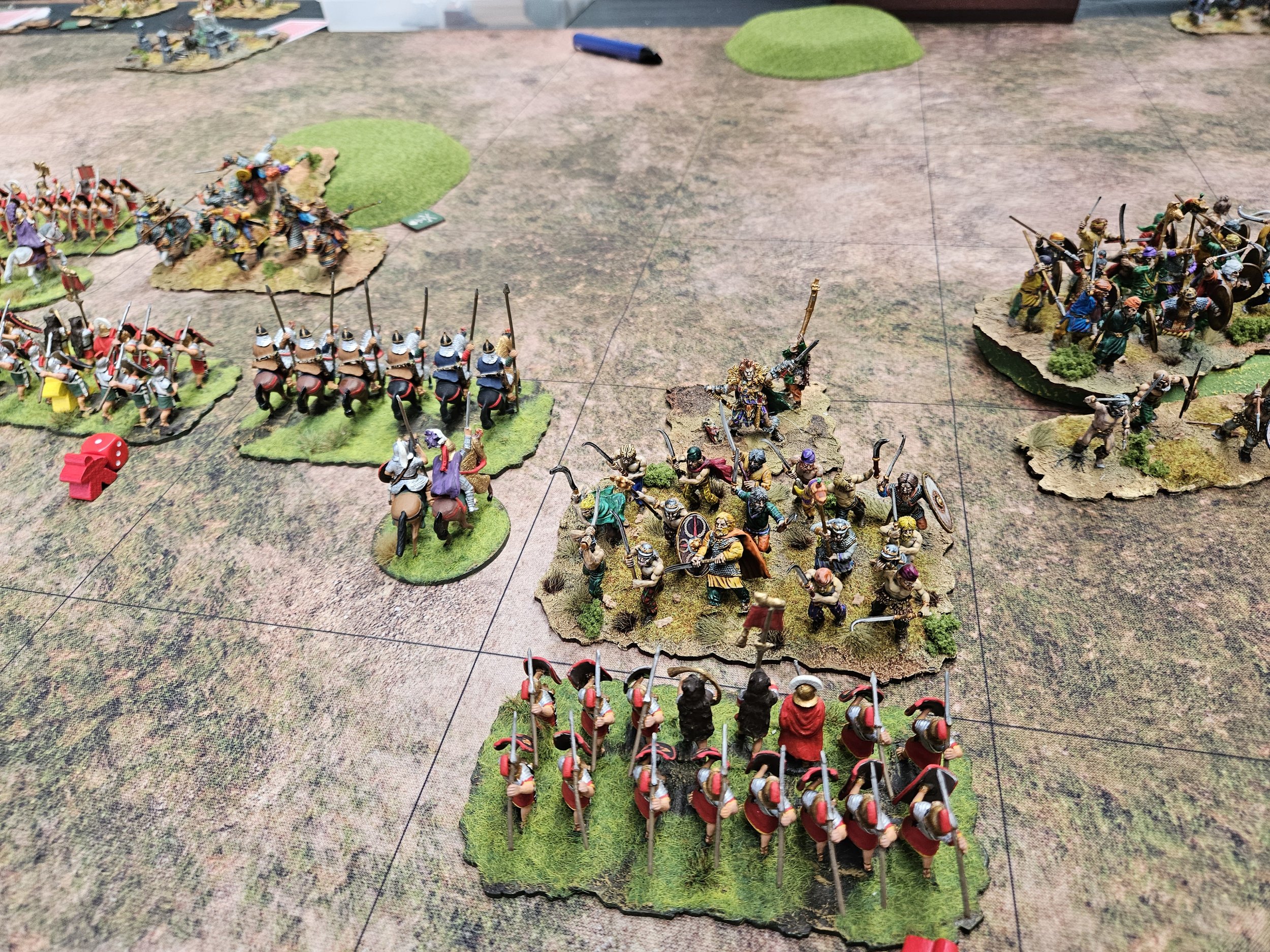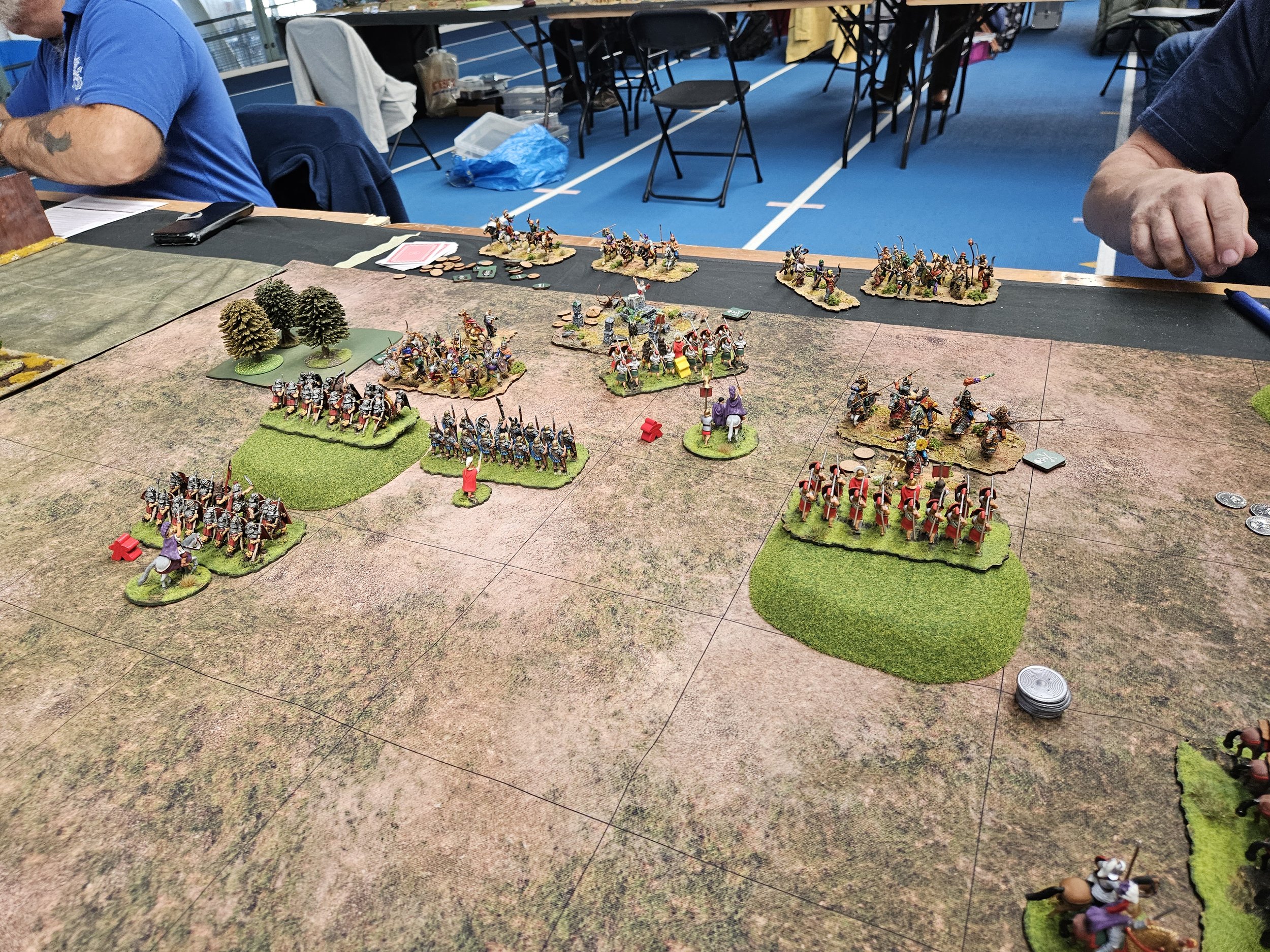More Condotta
/Here’s a few more figures off the Christmas-break production line: more later Venetian Condotta types for the 2024 To The Strongest competition season. Let’s just hope I can get them all finished before Wales at the end of the month or it will be back to my trusty Romans!
First up are a couple of units of schioppettiere light infantry handgunners.
And next some lancieri delle ordinanze pikemen:
All three units are Perry plastics in 28mm, and from the same box of Mercenary Infantry. As I paid only £18.50 for the box, and still have eight infantry to add to my next unit, that seems like very good value to me indeed.
Do I find having to build the miniatures a pain? Well, yes…but no more of a pain than prepping an all metal or plastic figure for painting and, as you will hopefully see in the pics above, you do get the chance to build figures with individual character: there are some weary looking individual in that pike block!
I still need to build more infantry and all the horse before the army is ready to hit the gaming table. I got a lot done over Christmas (32 infantry, 12 cavalry) but I can see it’s going to be tough to finish everything in time for my first tournament.









